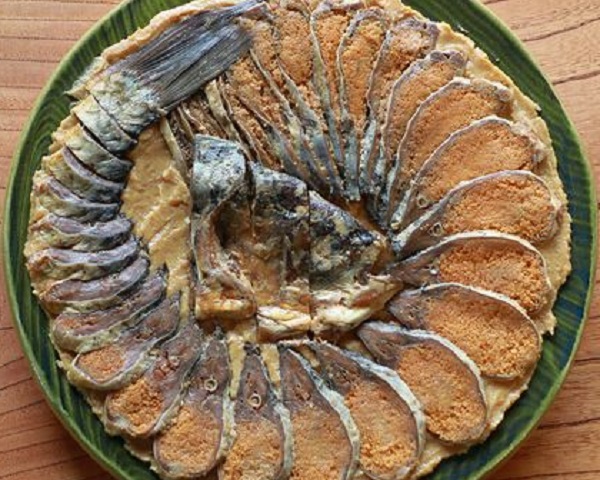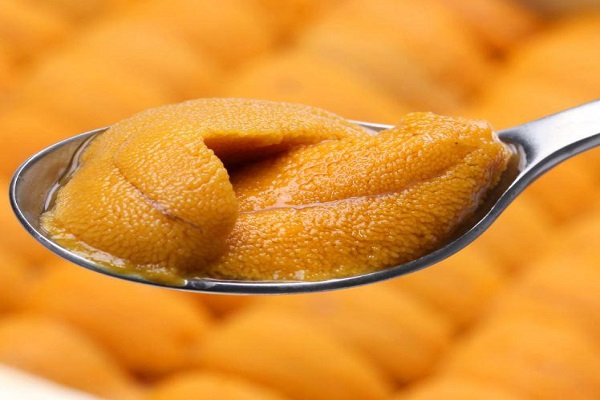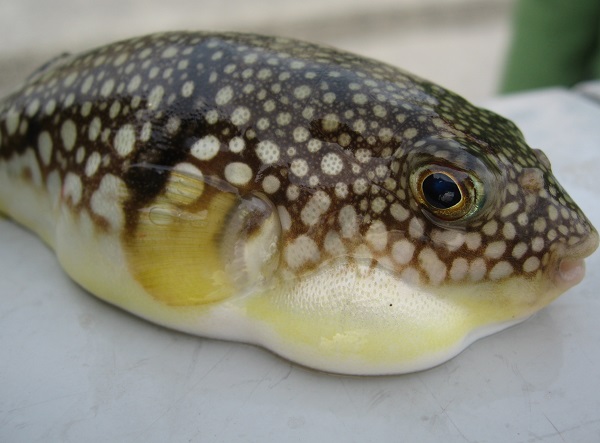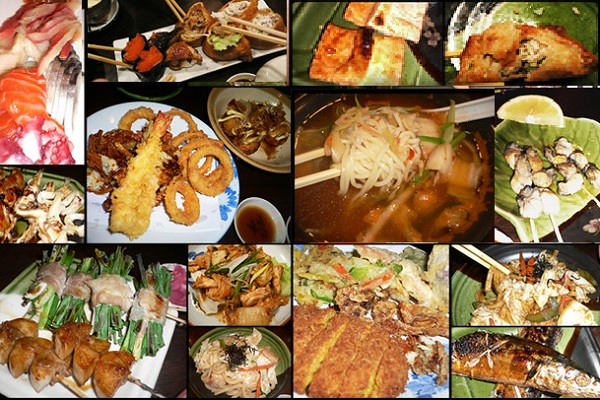Japan is the one country where you will find the best version of any seafood you can think of. The Japanese have seafood recipes going back thousands of years with the best chefs of each seafood taking years of thorough training to perfect their skill. When most people think of food in Tokyo, they only think of sushi and sashimi, but how about Shiokara? Well, you won’t wanna think about it much because it is just salted fish guts (often cuttlefish) which are fermented and served alongside Sake or other Japanese food. It takes a strong stomach to brave a plate of fish guts, but you are not nearly done with the list of strange but amazing Japanese seafood.
Fugu-Puffer Fish
Tetrodotoxin is one of the deadliest poisons found in nature. It is a neurotoxin that causes paralysis and death and pufferfish have it in plenty. Fugu is therefore more of a daredevil dish rather than a delicacy and only a few licensed chefs are allowed to prepare sushi and sashimi from pufferfish. The most toxic organs including the ovaries and gall bladder have to be removed with lots of caution to ensure that other parts of the fish don’t get contaminated with the poison. Even the most experienced chefs have to be very careful when preparing fugu and even after the most careful preparation, you will still feel a tingly sensation on your lips when you eat fugu.
Tarako/Mentaiko-Cod Roe Sausage
If you are not a fan of eating unhatched fish eggs, you might want to hold back on ordering Tarako in a Japanese restaurant. The eggs are usually extracted from the fish with their sac still intact when served raw, they make a salty runny side dish that is served on rice balls as sashimi. The roe may also be spiced and cooked to make Mentaiko which is definitely one of the strangest sausages you will ever taste.
Shirako-Fish Sperm
Japanese see food doesn’t stop at the eggs. Male fish, especially large ones such as Cod, Tuna and Mackerel have their sperms harvested to make Shirako. You may never realize that you are eating fish milt when you eat it on rice balls or other foods but you do get a feeling that you are eating a strange part of a fish. It retains the saltiness with an extra sliminess. It is often used as a topping on sushi and sashimi as well as other seafoods.

Funazushi-Fermented Sushi
The taste of raw fish is hard enough on the taste buds but the thought of stomaching fermented raw fish definitely takes gross to a whole new level for most foreigners. It is made using a whole fish whose insides are removed before being pickled for up to three months. The fish is then salted and stuffed with rice before being fermented for up to three years. To many outsiders, this seafood is nothing but rotten fish. It is eaten straight from the fermenting container so the taste and smell are too strong for those with a weak stomach.
Odori Ebi-Live Baby Shrimp
Odori Ebi translates into dancing shrimp which is exactly what you will be served when you order this expensive seafood in a restaurant. The live shrimp have their heads and shells (which are also edible once deep-fried and crunchy). The shrimp is then served while still dancing on the plate and all you have to do is deep in Sake or sauce and then chew as much as possible before swallowing. The shells and the head can also be served as a side dish if you like.
Kujira-Whale Meat
This is not Gojira but it may well be close to it. Consumption of whale meat is a controversial issue even in Japan. The global ban on whaling saw the reduction of this salty meat but Japan has resumed the practice in spite of global condemnation. The meat is served in select restaurants in cities such as Tokyo but more widely in rural areas. Those that eat it say it is salty but a little bland and therefore better when deep-fried rather than as sushi.
Kurage-Jellyfish
Jellyfish have a reputation for being an invasive species that is destroying the oceans with some species carrying the deadliest poison known to man. In Japan, you can have jellyfish sashimi for lunch though. On their own, jellyfish don’t have much taste especially because it is usually dried first before being rehydrated to be eaten. It has a rubbery taste that gives you the same feeling as chewing on rubber. However, when dressed right with enough sauce, it makes a great snack.

Uni-Sea Urchin
This is another Japanese delicacy whose appearance may be scary to some people but it is delicious when prepared by a professional. The urchins have a spiky shell but the most delicious parts are the reproductive organs found underneath. The shell is broken and then the innards are served and eaten raw. They have a bitter creamy texture that is highly admired by the eaters which is why these deep-sea creatures fetch such a high price in the Japanese seafood markets.
Shirasu-Baby Fish
Yes, baby fish make a great snack in Japan if you have the stomach to munch on them. The most common ones are baby sardines but you can also find eels, herring and Ayu. The fish are not fully developed so they are easy to chew through and believed to have high quantities of calcium. Omega 3 and Omega 6 fatty acids. They are also eaten raw, which might be hard for some foreigners. There is always the option of eating the dried or cooked Shirasu as well.
Suppon-Turtle Soup
This is another Japanese delicacy that doesn’t go down well with many in the conservation community. Soft-shelled turtles have been eaten in Japan since as early as 2500BCE so this is not a new delicacy for some locals. The shells are believed to be some kind of aphrodisiac which is why some people eat a powdered version of meat. The most common version of this dish is the hot-pot soup or Suimono (clear soup).
Have you heard of any of these seafood dishes before? Have you tried any of them? Do let us know in the comments below.









